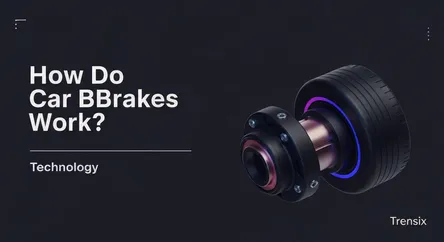Technology
How Do Car Brakes Work?

Discover how car brakes work, from traditional hydraulics to the latest trends in regenerative braking and advanced driver-assistance systems.
What is it?
A vehicle's braking system is a critical safety feature designed to slow down or stop a moving car. Most modern cars use a hydraulic system. When you press the brake pedal, it forces fluid through brake lines to calipers. These calipers squeeze brake pads against a spinning disc (rotor) attached to the wheel, creating immense friction. This friction converts the car's kinetic energy into heat, effectively slowing it down. Some vehicles may use drum brakes on the rear wheels, where brake shoes push outward against the inside of a drum to create friction and stop the vehicle.
Why is it trending?
Brake technology is constantly evolving. The most significant trend is regenerative braking, a standard feature in electric (EVs) and hybrid vehicles. This system captures energy normally lost as heat during deceleration and uses it to recharge the battery, increasing overall efficiency. Another key area is the integration with Advanced Driver-Assistance Systems (ADAS). Features like Automatic Emergency Braking (AEB) use sensors to detect potential collisions and can apply the brakes automatically faster than a human can react, significantly enhancing road safety.
How does it affect people?
The primary impact of brakes is safety. A well-maintained braking system is paramount for preventing accidents and protecting drivers, passengers, and pedestrians. Modern advancements like AEB provide an extra layer of security, acting as a digital co-pilot in critical moments. For EV owners, regenerative braking directly translates to extended driving range and reduced wear on traditional brake pads, lowering long-term maintenance costs. Understanding your car's braking system allows for safer driving habits and helps you recognize when service is needed, ensuring reliability on the road.